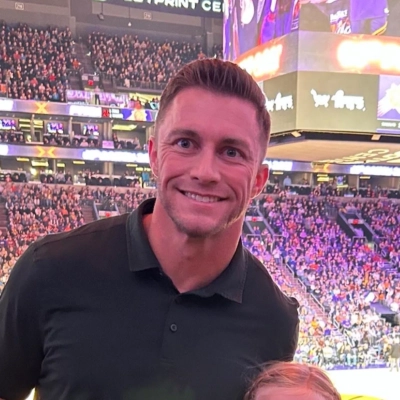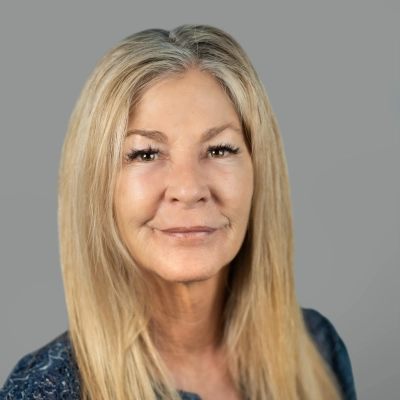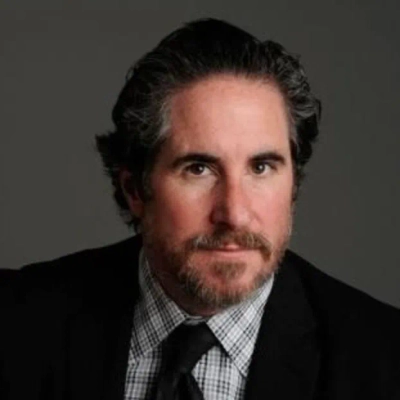12 Ways Difficult Feedback Led to Personal Growth and Acceptance
This practical guide reveals how industry leaders transformed critical feedback into significant personal breakthroughs across business, medicine, and leadership. Experts share twelve powerful examples where difficult conversations catalyzed profound professional growth and acceptance. Their collective wisdom shows how embracing uncomfortable truths—rather than avoiding them—creates pathways to more effective communication, data-driven decision making, and authentic leadership.
- Simple Human Truth Transformed My Leadership
- Intensity Masked Survival Mode in Leadership
- Balancing Vision with Execution in Business
- Finding Human Connection Beyond Technical Writing
- Listen First Before Offering Technical Advice
- Persuasion Requires Balance Not Just Aggression
- Data Guides Creative Process Over Personal Preference
- Communication Proves Essential to Service Quality
- Separating Personal Attachment from Company Mission
- Patient Outcomes Matter More Than Medical Dogma
- Stepping Back Allows Team Members to Excel
- Curiosity Turns Criticism into Growth Opportunity
Simple Human Truth Transformed My Leadership
I don’t think about “receiving difficult feedback” in a corporate way. The one time it led to important personal growth for me was a simple, human one. A few years ago, I was so stressed out about the business that my temper was short, and I was being too hard on my crew. One of my oldest, most trusted guys took me aside and said, “Ahmad, we all know you work hard, but you’re burning out. You have to take care of yourself.”
My first reaction was resistance. I wanted to deny it. I felt like I had to be tough to be a good leader. But I trusted this guy, and I knew he was being honest. The turning point from resistance to acceptance was when I realized that a good leader isn’t a person who is just tough. A good leader is a person who is committed to a simple, hands-on solution. I knew I had to make a change.
I started to be a person who was more present with my family and more focused on my health. I made a commitment to my health. I started getting to the gym before work. This had a huge impact on my business. My leadership became a lot more effective because my crew saw that I was a person who cared about them, not just the work.
My advice to any business owner is this: stop looking for a corporate “solution” to your problems. The best way to “catalyze personal growth” is to be a person who is honest with his team. The best “feedback” is a simple, human one. The most valuable thing you can do for your business is to be a person who is in control of his own life.
Intensity Masked Survival Mode in Leadership
One instance that catalyzed important growth for me was receiving feedback that I was “too intense” in my leadership approach. Initially, I pushed back against this critique because I viewed my intensity as dedication and drive, positive qualities that fueled my success.
But when I finally paused and truly absorbed what was being shared, I had a revelation. What I called intensity was actually my nervous system operating in survival mode, manifesting as controlling behavior, constant pushing, and chronic over-performing.
This insight changed everything. Rather than dismissing the feedback, I began using it as a signal to self-regulate, soften my communication style, and lead with greater steadiness. The transformation yielded remarkable results: deeper connections with my team, significantly more influence across the organization, and a sustainable leadership approach that prevented burnout.

Balancing Vision with Execution in Business
There was a time early in Aura when an investor told me I was too focused on the “idea” of a modern funeral service and not enough on the realities of running a business. At first I bristled at that. Aura was personal to me. I had poured myself into creating something different, and it felt like they were questioning my conviction. After sitting with it, I realized what they were really saying was that belief alone wouldn’t carry us. Families needed us to deliver consistently, and investors needed to see a business that could stand the test of time.
That feedback shifted the way I worked. I began paying closer attention to the operational side of things, making sure we could grow in a way that was sustainable. It taught me that vision and execution had to walk together. In funerals, you don’t get a second chance to get it right, and that reminder pushed me to build systems that honored the trust people place in us. What once felt like criticism became one of the most valuable lessons in balancing heart with discipline, and it has stayed with me every day since.

Finding Human Connection Beyond Technical Writing
One moment that stands out was early in my writing career. An editor told me, bluntly, that my work “sounded smart but didn’t feel human.” I’d spent so much time trying to sound polished that I’d lost the reader’s voice in the process.
At first, I felt defensive. I told myself the editor didn’t “get” my style. But after sitting with it for a few days, I reread my drafts and realized she was right—my writing was technically fine but emotionally flat.
I started focusing less on perfect phrasing and more on connection: picturing the reader, using real examples, and letting some imperfections show through. That shift not only improved my writing but also changed how I handle feedback in general. Now, when criticism stings, I ask myself, “What truth might be hiding inside this discomfort?” It’s become my way of turning resistance into a tool for growth.

Listen First Before Offering Technical Advice
Back when I was still running most of the service calls myself, a customer once told me I explained things in a way that made her feel talked down to. That hit me harder than I expected because I genuinely thought I was helping by giving detailed answers. My first instinct was to brush it off, but later I realized she was right—I was focusing on showing what I knew instead of making sure she understood.
From then on, I started slowing down, asking questions, and listening more before giving advice. That shift changed how I communicate, not just with customers, but also with my team. Moving past the sting of that feedback helped me become more patient and better at meeting people where they are.

Persuasion Requires Balance Not Just Aggression
Early in my career, a judge pulled me aside after a hearing and told me that I was too aggressive in my delivery. At the time, I thought being tough and forceful was the way to show strength. I remember leaving the courthouse feeling frustrated because I believed I was fighting hard for my client. For a while, I resisted the idea that my style might actually be undermining my effectiveness. Eventually, I realized that the judge wasn’t criticizing my preparation or my commitment, but pointing out that persuasion often comes from clarity and balance rather than sheer intensity. Once I accepted that, I started focusing more on how I presented arguments, not just the substance. I learned that being respectful and measured could actually make my points land more powerfully. That shift changed the way I approach every case. It allowed me to build credibility with judges and prosecutors while still advocating strongly for clients. Looking back, that difficult feedback pushed me to grow into the attorney I am today, one who combines toughness with tact and achieves better results because of it.
Data Guides Creative Process Over Personal Preference
Early in my career, I worked on a campaign that I thought was flawless. I had poured myself into the messaging, convinced it would resonate. When the results came in, the numbers were underwhelming, and my manager at the time sat me down with some blunt feedback. He told me I was too focused on what I thought the audience wanted instead of listening to what they were actually telling us through the data. At first, I pushed back internally. I felt like he didn’t see the hours I had put in or the creativity behind the work. It stung. But after sitting with it, I started digging deeper into the customer data and realized he was right. I had created something that made sense to me, not necessarily to the people we were trying to reach. That moment changed the way I approach marketing. Now I start with listening, whether that’s through analytics, customer conversations, or market research, and let that guide the creative process. What felt like a tough critique at the time became one of the most valuable lessons of my career, because it shifted my perspective from defending ideas to serving the audience.

Communication Proves Essential to Service Quality
A customer once told me directly that while our service solved their pest problem, they didn’t feel we communicated well enough throughout the process. At first, I bristled at the comment because I thought results were all that mattered. But the more I sat with it, the more I realized they were right—if people didn’t feel informed, they couldn’t fully trust the service, no matter how effective it was. That was tough to swallow because I had always prided myself on doing the job right.
What helped me move from resistance to acceptance was taking that feedback and turning it into a new habit. I began making it a point to walk every customer through what we did before leaving a job site, and later we built that into a formal part of our process with written summaries. Looking back, that difficult feedback completely reshaped how I see customer service. It taught me that communication isn’t an add-on to the job—it’s part of the job.

Separating Personal Attachment from Company Mission
One of the most difficult pieces of feedback I ever received came from a dermatologist on my own team. We were reviewing a formula for a new cream, one I had originally developed with my own daughters in mind. He pointed out that while it was good, clinical data suggested a different ingredient would be more effective for a wider range of skin types. The product felt so personal, and his feedback felt like a criticism of my choices as a mother, not just a founder.
The shift from resistance to acceptance happened when I realized my role had evolved. I didn’t start my company just to solve my own family’s skin issues, I started it to help all families. My personal story was the starting point, not the final destination. Accepting that feedback required me to trust the experts I hired and put the customer’s needs ahead of my own attachment to a formula. It was a crucial lesson in separating my identity from the product and letting our mission grow beyond my own narrative.

Patient Outcomes Matter More Than Medical Dogma
Early in my practice, the most difficult feedback came indirectly from my patients. They would follow traditional advice for digestive issues but return with the same problems, feeling hopeless. Their persistent suffering was a clear signal that the conventional methods were failing them. I initially felt a deep sense of frustration, questioning my own abilities because the established model I was taught wasn’t delivering the results my patients deserved.
My acceptance came when I stopped viewing their lack of progress as a personal failure and started seeing it as a systemic one. I had to accept that the standard toolkit was incomplete. That realization was liberating because it gave me permission to seek better answers. It forced me to look beyond the textbooks, which led directly to formulating my own enzymes and developing the gut protocols I use today. True growth began when I put my patient outcomes ahead of medical dogma.

Stepping Back Allows Team Members to Excel
Early in my business career, one of my technicians pulled me aside and told me that I had a habit of jumping in too quickly when problems arose, which made the team feel like I didn’t trust them to handle things. At first, I resisted that feedback—I thought I was just being proactive and showing leadership. However, after hearing similar comments from others, I had to admit that there was some truth to it.
Observing the team’s response when I intentionally stepped back helped me accept this feedback. On one occasion, a technician managed a difficult customer independently, and the customer later called to compliment him. This demonstrated that my involvement was sometimes limiting the team’s growth. I learned that effective leadership means creating opportunities for others to excel.

Curiosity Turns Criticism into Growth Opportunity
Receiving difficult feedback can be a powerful catalyst for personal growth because it exposes things that we might not recognize on our own. Initially, it’s common to feel defensive or resistant. Difficult feedback can feel like a threat to our self-image or competence. However, when we pause and shift from reacting emotionally to curiously exploring the feedback by asking “Which parts of this may be true?” and “What can I learn from it?”, we move from resistance toward acceptance.
In my own experience, I’ve found that acceptance grows through self-reflection. Rather than interpreting feedback as criticism, I reframe it as information that expands my perspective and offers avenues for change. This doesn’t mean agreeing with all feedback given but rather sifting through the messages for valuable insights. Embracing feedback in this way fosters resilience, adaptability, and deeper self-awareness, which are essential qualities in both personal and professional growth.







